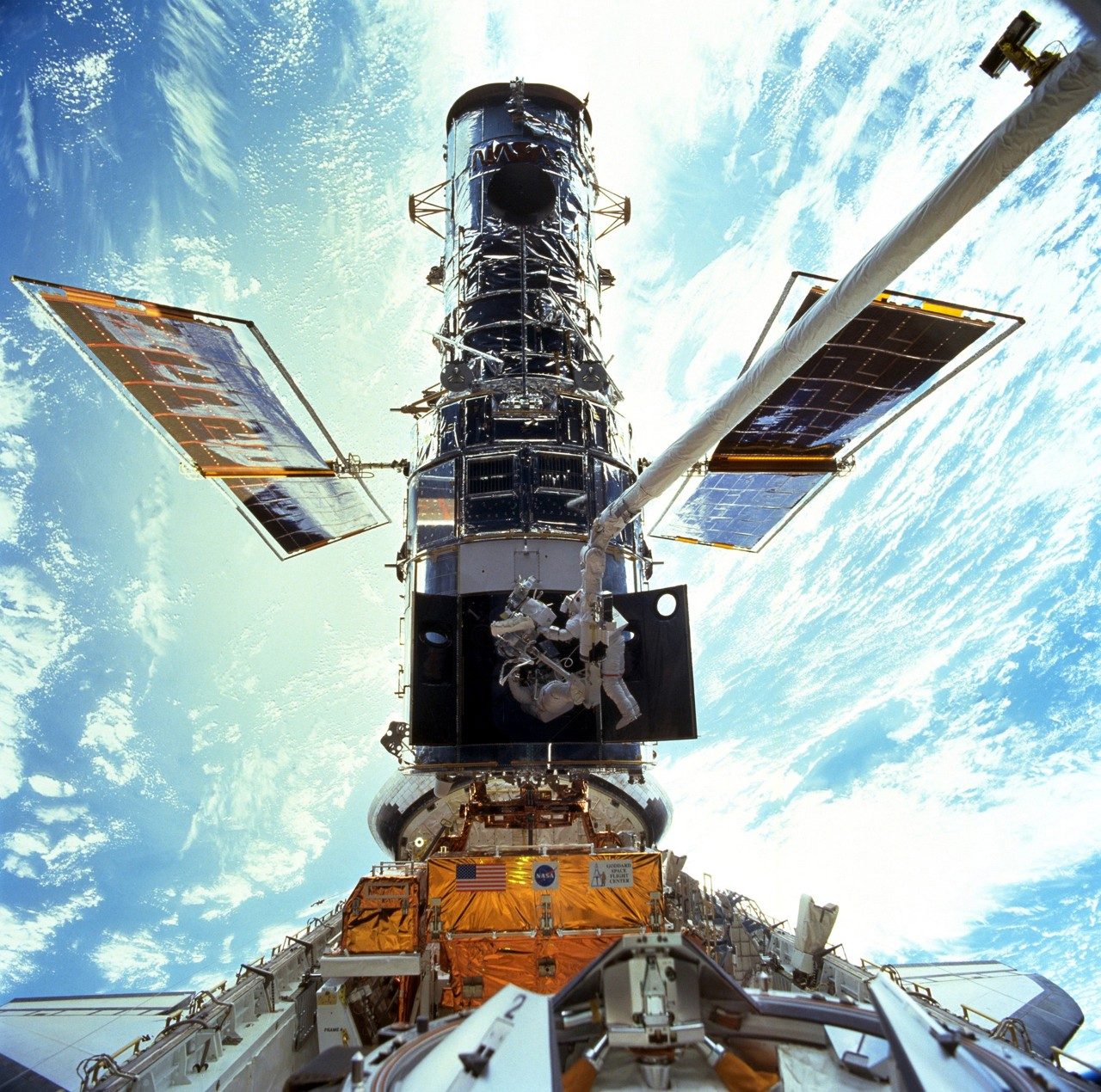Whether it was early sailors using the stars for navigation, Galileo training his telescope on Jupiter’s moons, or contemporary astronomers viewing a distant nebula from a mountain top observatory, earthbound observations have always been limited by the conditions and vagaries of the atmosphere. That changed in the last decade of the 20th century.
The Hubble Space Telescope is the world’s premier orbiting astronomical observatory. It views the Universe from the near-ultraviolet through the visible light spectrum and into the infrared. It is the first orbiting observatory to be designed for extensive on-orbit servicing. The history of the Universe is written in starlight, and the Hubble Space Telescope has recorded much of that history.
Lockheed Martin Space Systems in Sunnyvale, Calif. was selected by NASA in 1977 to design and build the spacecraft and provide spacecraft systems integration. Since the 1990 launch, Lockheed Martin personnel in Sunnyvale, and at NASA's Goddard Space Flight Center, Md., have helped NASA manage the day-to-day spacecraft operations of the telescope, and provided extensive preparation and training for the telescope servicing missions.

The success of the first HST servicing mission in December 1993 proved that complex, on-orbit spacecraft servicing could be effectively performed. On four subsequent servicing missions - in February 1997, December 1999, March 2002, and May 2009 - spacewalking astronauts installed several new state-of-the-art scientific instruments, a new high-performance main computer, and new energy efficient solar arrays. They replaced gyroscopes, batteries, and data recorders, and repaired surface insulation on the telescope. Hubble was built to be serviced, and the five shuttle missions not only extended its life, but made it a much more powerful and capable telescope on each visit.
Since its launch in April 1990, Hubble has provided scientific data and images of unprecedented resolution that have generated many new and exciting discoveries. Even when reduced to raw numbers, the accomplishments of the 12.5-ton orbiting observatory are impressive:
- Hubble has taken nearly one million exposures.
- Hubble has observed more than 32,000 astronomical targets.
- Astronomers using Hubble data have published nearly 8,500 scientific papers.
- Circling Earth every 96 minutes, Hubble has traveled approximately 3.1 billion miles.
- The Space Telescope Science Institute (STScI) has archived more than 42 terabytes of data from Hubble.
Sources and Additional Reading
- Dunar, Andrew J., and Waring, Stephen P. – Power to Explore: History of Marshall Space Flight Center 1960-1990. Washington, DC: National Aeronautics and Space Administration, NASA History Office, Office of Policy and Plansashing
- Tatarewicz – The Hubble Space Telescope Servicing Mission
- http://history.nasa.gov/SP-4219/Chapter16.html, accessed 16 July 2012
- http://www.nasa.gov/mission_pages/hubble/story/index.html, accessed 16 July 2012.
- Sam Araki, Lockheed Martin Oral History. Mickey Clemons, interviewer. Page 10
- “Longest Lockheed Engineer Worked on Hubble.” ABC7 News, KGO-TV/DT San Francisco, 11 May 2009
- http://earthobservatory.nasa.gov/Features/BlueMarble/BlueMarble_history.php, accessed 16 July 2012.




